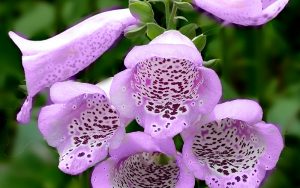
Deer resistant plants for N Florida
It can be discouraging to battle deer damage in your landscape. Barriers are the most effective solution but because of aesthetics or cost, they are often not practical. Since deer feeding behavior can be very unpredictable and affected by many factors (geography, regional tastes, time of year, hunger level, availability of preferred foods, population and habitat pressures), the best approach is likely an integrated one. Experiment with a combination of temporary and permanent physical barriers, motion activated devices, repellants (one type may work better than another on your particular deer) and plants deer are likely to avoid, to find what seems to work best in your own yard. There are many long lists of deer resistant plants because at times these plants have been left alone by deer. Some plants are even listed as resistant on one list and as a favorite food on another. Trials in your own yard can discover which plants are most likely to be left alone in your particular situation. The best strategy is to start with plants most likely to be unattractive to deer. Poisonous plants are tops on the list.
The Short List
Unless deer are starving, poisonous plants may be the only reliably deer resistant plants. These include Foxglove (Digitalis), Milkweed (Asclepias), Euphorbias like Diamond Frost, Poinsettia, and Crown of Thorns, Oleander (Nerium), Daffodils (Narcissus), and Poppies (Papaver). Although the fruits may be targeted, the vegetation of Eggplant, Tomato, and Potato (all Solanum) can cause nitrate poisoning. Angel’s Trumpets (Brugmansia) is also in this group. Avocado (Persea) can be toxic to large animals. There are other poisonous plants but not suited to our gardening climate.
You can also identify plants which are likely candidates for deer avoidance by noting whether they have highly fragrant foliage (deer rely on their sense of smell for protection and strong smells may mask predators), tough, hairy or spiny foliage, gray foliage, or milky sap. Deer may also find some to have a bitter or alkaloid taste. The longer list below contains plants with these features and was developed from University, Cooperative Extensions, and Master Gardener publications from sources in the Southeast for plants we can grow.
For the full list, download our PDF.
